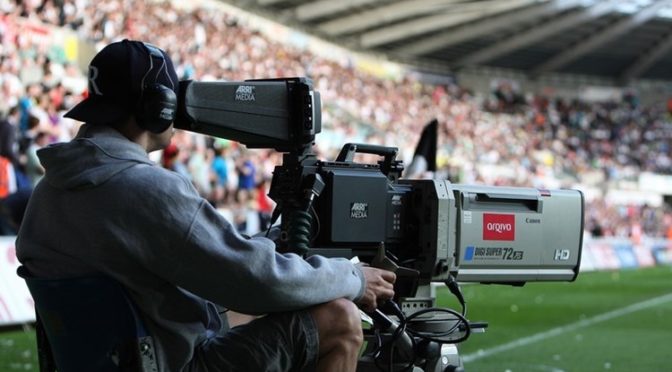In addition to my SupChina column, I’ve also been filing a weekly China Digest for SportBusiness over the past year. Here’s a summary of what you can find in this week’s version:
CSL TV rights deal extended for another five years
It’s been a roller coaster ride for the Chinese Super League (CSL) over the past three years – most clearly evidenced by the ups and downs of its main domestic broadcast deal. In the first TV rights auction since the government announced widespread football reforms in March 2015, the relatively little known Tiao Dongli, aka China Sports Media (CSM), stunned the sports industry in September 2015 by paying a massive 8 billion RMB ($1.25 billion) in a five-year deal, far outbidding more established rivals, including CCTV, IMG and Infront.
It marked a staggering 20-fold increase on the previous payout and, despite the money pouring into Chinese soccer following the reform announcement, the industry was universal in declaring this A Bad Deal.
The deal was structured to pay 1 billion RMB in 2016 & 2017 and 2 billion RMB in each of the following three years, but CSM suddenly looked very prescient indeed when, just a few months later, they flipped the first two years to LeSports for 2.7 billion RMB – ostensibly a 35% profit. Even after LeSports’ well-documented struggles saw them fail to pay their bills, rival PPTV picked up the 2017 contract on terms that were thought to be comparable, but, with the market depressed and the yearly fee set to double to 2 billion RMB for the 2018 season, the pressure was building on CSM to make a profit on the rest of the contract.
However, CSM received something of an inadvertent lifeline when the Chinese Football Association (CFA) introduced new policies last year to promote playing time for U23 domestic players while also restricting the number of foreigners in the league. Amid anger from CSL sponsors, CSM led the argument that these policies negatively affected the value of the league – especially their rights deal.
As a result, they withheld payments and offered to spread the agreed 8 billion RMB over ten years instead of five. Ultimately CSM’s PR campaign worked with a compromise of sorts now being reached: CSM will pay 11 billion RMB in total with the deal extended for another five years (until 2025), with, again, no other competitors offering anything remotely close.
The graph from 2014 to the present still shows a substantial increase in the value of the broadcast rights – but that line from then to now has been anything but straight. Here’s the main reason, though, why Chinese soccer attracts so much global attention from the industry:
- CSM’s deal for CSL domestic rights in 2018 is c.$175 million
- Sky/BT‘s deal for EPL domestic rights in 2018 is $2.4 billion
China has unique challenges, of course, but given the massive size of the country’s population and its growing middle classes, the potential still exists for that TV contract to see a huge increase in the years to come.
3×3 basketball on the rise
With the price of broadcast rights rising rapidly in China over the past few years, it has become increasingly common for sports companies to create their own sports properties, instead of forking out for existing ones. Sina Sports has just signed a five-year deal with Spanish agency Mediapro to promote its 3×3 Golden League basketball tournament, with the aim of taking the Chinese event to a global audience.
And it’s not the only 3×3 tournament on the block. Head over to SportBusiness to find out more and to see why CBA chief Yao Ming talked about “injecting a cardiac stimulant into Chinese basketball.”
NBA’s Chinese New Year festivities larger than ever
The National Basketball Association (NBA) has announced its largest ever Chinese New Year Celebration, with a record 93 games set to air in Greater China during a month-long festival which begins on February 2. 12 NBA teams, including current champions the Golden State Warriors, will mark the event with themed nights in their arenas, while the Warriors and Houston Rockets will wear specially-designed Nike uniforms with Chinese characters and symbolism inspired by Chinese culture for 12 games.
Now in its seventh year, the NBA’s annual celebration is a far cry from the “ethnic nights” of old when teams would slap a “Los” on jerseys and hand out fortune cookies, with sponsors including Spalding and Dongfeng Nissan signing up to participate this year.
Also this week
There are also stories in this week’s China Digest about:
- Guangzhou Evergrande making the “Rising Stars” section of Deloitte‘s Football Money League.
- An increased stake for the foreign co-owners of China League Two club BIT (background here).
- The Australian Open getting slammed for serving bottles of Shenzhen-based Ganten water in Melbourne.
To read about these stories in full and find other China-related links to topics including the 2022 Olympics, Li Na, LeSports, motor racing, ice hockey and the Philadelphia Eagles, click here.


